When the Smoke Detector Never Stops Beeping: Understanding and Addressing Chronic Anxiety
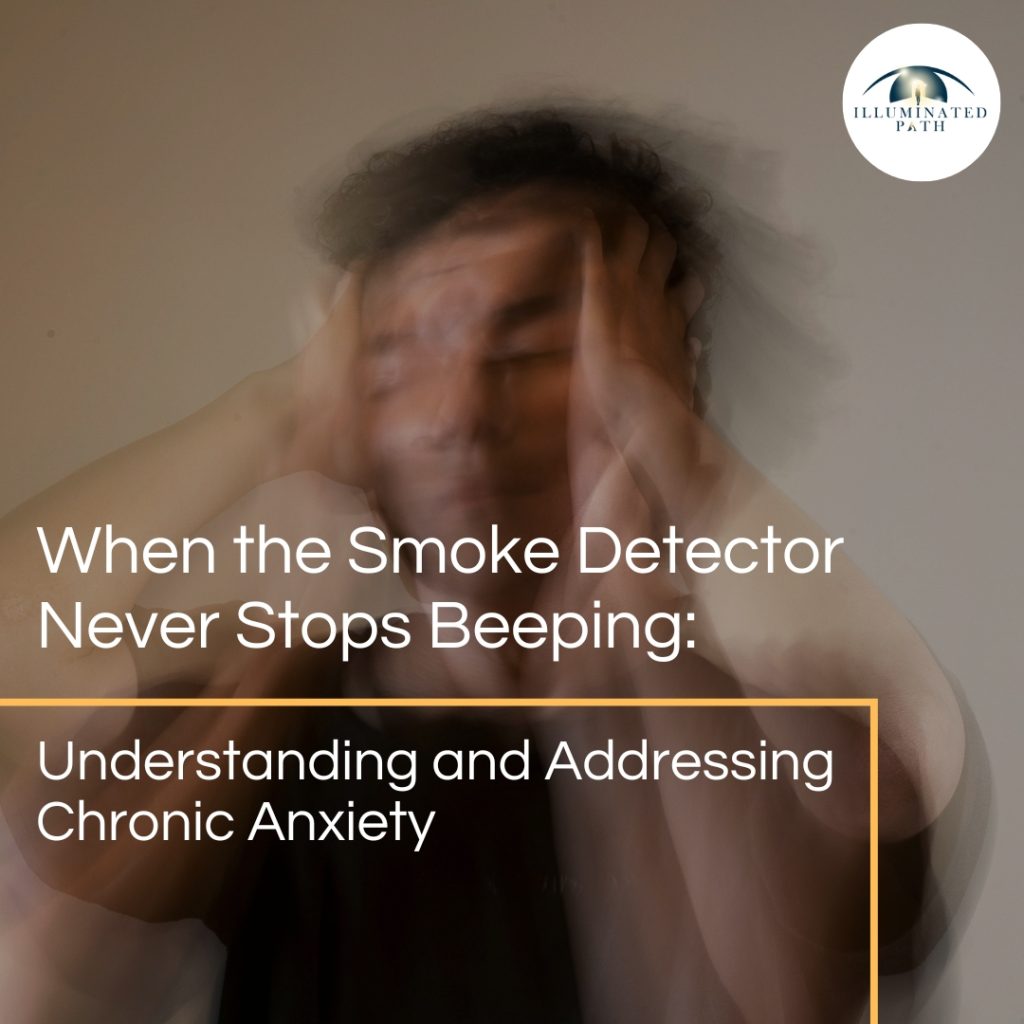
Daniel Goleman, the renowned expert on emotional intelligence, offered a potent analogy for understanding anxiety: “Anxiety is the mind’s smoke detector – sometimes it warns of real danger, often it’s just burnt toast. Learn to tell the difference.” This simple yet profound statement encapsulates a crucial aspect of navigating our inner world. However, what happens when the smoke detector malfunctions, relentlessly blaring even in the absence of smoke, or worse, when the “burnt toast” triggers a full-blown, ear-splitting alarm? This is the realm of chronic anxiety, a persistent and often debilitating condition that extends far beyond occasional worries or fleeting moments of unease. For those living with chronic anxiety, Goleman’s wisdom, while insightful, can feel like a distant shore. The constant barrage of anxious thoughts, physical sensations, and anticipatory dread makes it incredibly difficult to discern between genuine threats and the mind’s overactive imagination. The smoke detector, meant to be a helpful guardian, becomes a tyrannical overlord, dictating every thought and action, casting a long shadow over daily life. This article delves into the multifaceted nature of chronic anxiety, exploring its profound impact, the critical juncture where professional help becomes essential, potential underlying causes, effective treatment options, and ultimately, how to begin the journey of quieting the incessant alarm and learning to distinguish genuine danger from internal noise. The Unrelenting Symphony of Chronic Anxiety: A Life Lived on High Alert Chronic anxiety isn’t merely feeling a bit worried before a presentation or experiencing pre-exam jitters. It’s a pervasive state of apprehension and unease that lingers for extended periods, often months or even years. It’s a constant hum of worry in the background, occasionally escalating into full-blown panic attacks, but always present in some form. This persistent state of hyperarousal can manifest in a myriad of ways, impacting virtually every facet of an individual’s life: Cognitive Landscape: The mind becomes a breeding ground for intrusive thoughts, often negative, catastrophic, or repetitive. Worry becomes a default mode, with individuals constantly scanning for potential threats, real or imagined. Decision-making becomes fraught with difficulty, as every option is weighed against potential negative outcomes. Concentration and focus dwindle, making even simple tasks feel monumental. Memory can also be affected by the constant mental chatter. Emotional Turmoil: Beyond worry, chronic anxiety can fuel a range of negative emotions, including fear, irritability, restlessness, and a sense of being overwhelmed. Individuals may experience a persistent feeling of being “on edge,” unable to relax or find peace of mind. This emotional exhaustion can lead to feelings of sadness, hopelessness, and even contribute to the development of depression. Physical Manifestations: The mind-body connection is undeniable, and chronic anxiety takes a significant toll on physical health. Common symptoms include muscle tension, headaches, stomachaches, digestive issues (like irritable bowel syndrome), fatigue, sleep disturbances (insomnia, restless sleep), rapid heartbeat, sweating, and shortness of breath. These physical symptoms can be distressing in themselves, often exacerbating the underlying anxiety and creating a vicious cycle. Behavioral Adaptations: To cope with the relentless anxiety, individuals may develop avoidance behaviors. They might start avoiding social situations, work responsibilities, or even everyday activities that trigger their anxiety. This avoidance, while providing temporary relief, ultimately limits their lives, shrinks their world, and reinforces the anxiety. Other maladaptive coping mechanisms, such as excessive reassurance seeking, procrastination, or engaging in rituals, may also emerge. Impact on Relationships: Chronic anxiety can strain interpersonal relationships. Irritability, difficulty relaxing and enjoying time together, and avoidance behaviors can lead to misunderstandings and conflict. Loved ones may struggle to understand the intensity of the anxiety and may feel helpless or frustrated. The cumulative effect of these symptoms can be profoundly debilitating. Individuals with chronic anxiety may find it difficult to perform at work or school, maintain healthy relationships, pursue their hobbies, or simply enjoy life. The constant internal struggle can lead to feelings of isolation, shame, and a diminished sense of self-worth. When the Alarm Bells Demand Attention: Recognizing the Need for Professional Help While everyone experiences anxiety to some degree, chronic anxiety is qualitatively and quantitatively different. It’s not something that can be simply “willed away” or overcome with positive thinking alone. Recognizing when the “smoke detector” is malfunctioning to the point of requiring professional intervention is a crucial step towards recovery. Here are some key indicators that suggest it’s time to seek help: Persistence and Intensity: The anxiety is persistent, lasting for several months or longer, and its intensity significantly interferes with daily functioning. Impairment of Daily Life: Anxiety makes it difficult to perform everyday tasks at work, school, or home. It impacts concentration, productivity, and overall performance. Relationship Strain: Anxiety is negatively affecting relationships with family, friends, or romantic partners, leading to conflict, avoidance, or isolation. Physical Symptoms: Physical symptoms associated with anxiety are frequent, severe, and causing significant discomfort or concern. Avoidance Behaviors: You find yourself increasingly avoiding situations or activities that trigger anxiety, leading to a restricted lifestyle. Difficulty Controlling Worry: You feel overwhelmed by your worries and find it difficult to control or stop the flow of anxious thoughts. Panic Attacks: You experience recurrent panic attacks – sudden episodes of intense fear accompanied by physical symptoms like rapid heartbeat, dizziness, and shortness of breath. Co-occurring Conditions: You suspect or have been diagnosed with other mental health conditions, such as depression or substance use disorders, which often co-occur with anxiety. Decreased Quality of Life: Overall, your anxiety is significantly impacting your enjoyment of life, your sense of well-being, and your ability to pursue your goals. Acknowledging the need for help is not a sign of weakness but rather an act of self-awareness and strength. Chronic anxiety is a treatable condition, and seeking professional support is the first step towards regaining control and silencing the incessant alarm. Unraveling the Roots: Exploring Potential Underlying Causes of Chronic Anxiety The development of chronic anxiety is rarely attributable to a single cause. Instead, it typically arises from a complex interplay of genetic, biological, psychological, and environmental factors. Understanding these potential contributing factors can
Beyond the Flames: Understanding the Long-Term Impact of Wildfire Trauma on LA Communities
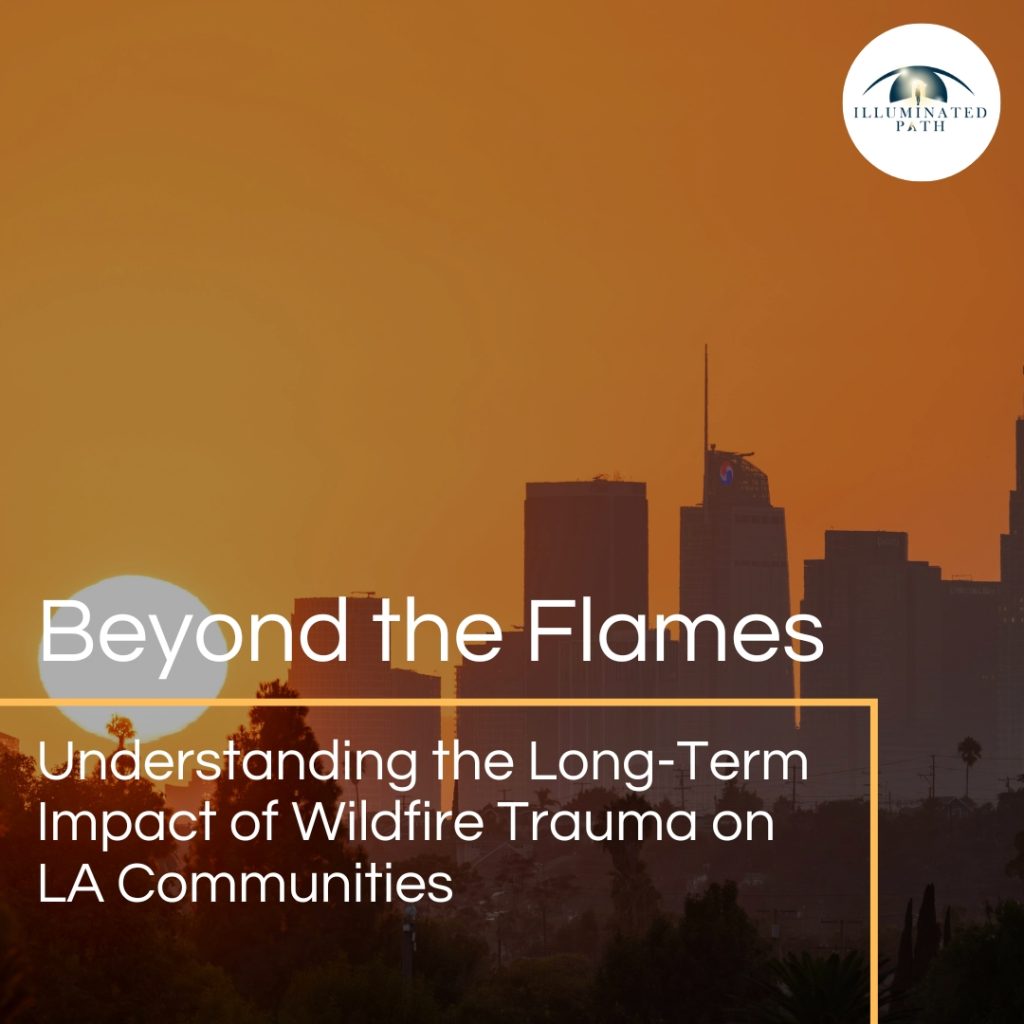
The iconic image of Los Angeles is often one of sunshine, beaches, and Hollywood glamour. But in recent years, a new and terrifying image has emerged: raging wildfires tearing through hillsides, homes, and lives. While the immediate devastation of these fires is undeniable, the long-term impact of wildfire trauma on LA communities is a complex and often invisible wound that demands attention. Beyond the immediate loss of life, homes, and property, wildfires leave a deep psychological scar on individuals and communities. The trauma of witnessing the destruction, fearing for one’s life, and experiencing displacement can have profound and lasting effects on mental health, social connections, and overall well-being. Understanding the nature and scope of this trauma is crucial for providing effective support, fostering resilience, and building stronger communities in the face of future fire threats. The Psychological Impact of Wildfires: More Than Just PTSD While Post-Traumatic Stress Disorder (PTSD) is often associated with wildfire trauma, the psychological impact extends far beyond this single diagnosis. Wildfires can trigger a range of mental health challenges, including: Acute Stress Disorder (ASD): This can occur in the immediate aftermath of a traumatic event, characterized by symptoms such as intrusive thoughts, nightmares, flashbacks, avoidance of reminders, and hyperarousal. Generalized Anxiety Disorder (GAD): Wildfires can heighten anxiety levels, leading to excessive worry, restlessness, and difficulty concentrating. Depression: The loss of loved ones, homes, and community can trigger feelings of sadness, hopelessness, and loss of interest in life. Substance Abuse: Some individuals may turn to drugs or alcohol to cope with the emotional distress of wildfire trauma. Adjustment Disorders: Difficulty adjusting to the changes and losses caused by wildfires can lead to significant emotional and behavioral disturbances. It’s important to recognize that these mental health challenges can affect individuals of all ages, including children, first responders, and those with pre-existing mental health conditions. The Ripple Effect: Trauma’s Impact on LA Communities The impact of wildfire trauma extends beyond the individual level, rippling through families, communities, and social systems. Family Strain: Wildfires can disrupt family dynamics, leading to increased conflict, communication difficulties, and challenges in providing support to one another. Community Disruption: The loss of community gathering places, schools, and businesses can disrupt social connections and support networks, leading to feelings of isolation and disconnection. Economic Hardship: The financial burden of rebuilding, replacing lost belongings, and dealing with insurance claims can create significant economic stress for individuals and families. Strain on Resources: Wildfires can overwhelm mental health services and other support systems, leading to long wait times and limited access to care. The Long-Term Toll: Chronic Stress and Health Consequences The psychological and social consequences of wildfire trauma can persist for years, leading to chronic stress and a range of health problems. Chronic Stress: The ongoing stress of dealing with the aftermath of a wildfire can disrupt the body’s stress response system, leading to chronic inflammation, weakened immune function, and increased risk of chronic diseases. Physical Health Problems: Studies have linked wildfire exposure to increased risk of cardiovascular disease, respiratory problems, and even cancer. Mental Health Challenges: Untreated trauma can lead to chronic mental health conditions, such as PTSD, depression, and anxiety, which can significantly impair quality of life. Increased Vulnerability: Trauma survivors may be more vulnerable to future stressors and challenges, leading to a cycle of adversity and difficulty coping. Building Resilience: Strategies for Recovery and Growth While the impact of wildfire trauma is significant, it’s important to remember that resilience and recovery are possible. Individuals, families, and communities can take steps to heal and build stronger foundations for the future. Individual Strategies: Seek Professional Help: Therapy can provide a safe and supportive space to process trauma, develop coping skills, and address mental health challenges. Practice Self-Care: Engaging in activities that promote emotional and physical well-being, such as mindfulness, exercise, and spending time in nature, can help to reduce stress and build resilience. Connect with Others: Building and maintaining strong social connections can provide a sense of belonging and support during difficult times. Focus on Strengths: Identifying and utilizing personal strengths and resources can foster a sense of agency and empowerment. Community Strategies: Trauma-Informed Care: Implementing trauma-informed practices in schools, healthcare settings, and community organizations can create supportive environments for healing and recovery. Community Support Groups: Providing opportunities for survivors to connect with others who have shared similar experiences can foster a sense of community and reduce isolation. Resilience Building Programs: Investing in programs that promote resilience, coping skills, and disaster preparedness can help communities to better withstand future challenges. Advocacy and Policy Change: Advocating for policies that address climate change, wildfire prevention, and mental health support can create systemic change and reduce the impact of future wildfires. The Path Forward: Embracing Hope and Collective Action The long-term impact of wildfire trauma on LA communities is a complex and multifaceted challenge. However, by understanding the nature of this trauma, investing in resilience-building strategies, and embracing a collective approach to healing and recovery, we can empower individuals, strengthen communities, and create a more hopeful future in the face of fire. The flames may leave scars, but they cannot extinguish the human spirit. By working together, we can help LA communities to rise from the ashes, stronger and more resilient than ever before. The Author Dr. Shadi Souferian Psy. D. Licensed Clinical Psychologist Therapist And Psychologist in Los Angeles And Beverly Hills. You might also enjoy this article: Beyond the Flames: Understanding the Long-Term Impact of Wildfire Trauma on LA Communities February 18, 2025Trauma Anxiety. It’s a word that’s become increasingly commonplace in our everyday conversations, a feeling that…Read more Breaking Free from Anxiety: A Path to Well-being February 10, 2025Personal DevelopmentTrauma Anxiety. It’s a word that’s become increasingly commonplace in our everyday conversations, a feeling that…Read more Energy Psychology: Bridging Ancient Wisdom and Modern Science for Holistic Healing February 5, 2025Personal Development The Rising Demand for Alternative Mental Health Solutions Mental health disorders affect over 970 million…Read more Finding the Way Back to Connection: How Therapy Fosters
Breaking Free from Anxiety: A Path to Well-being
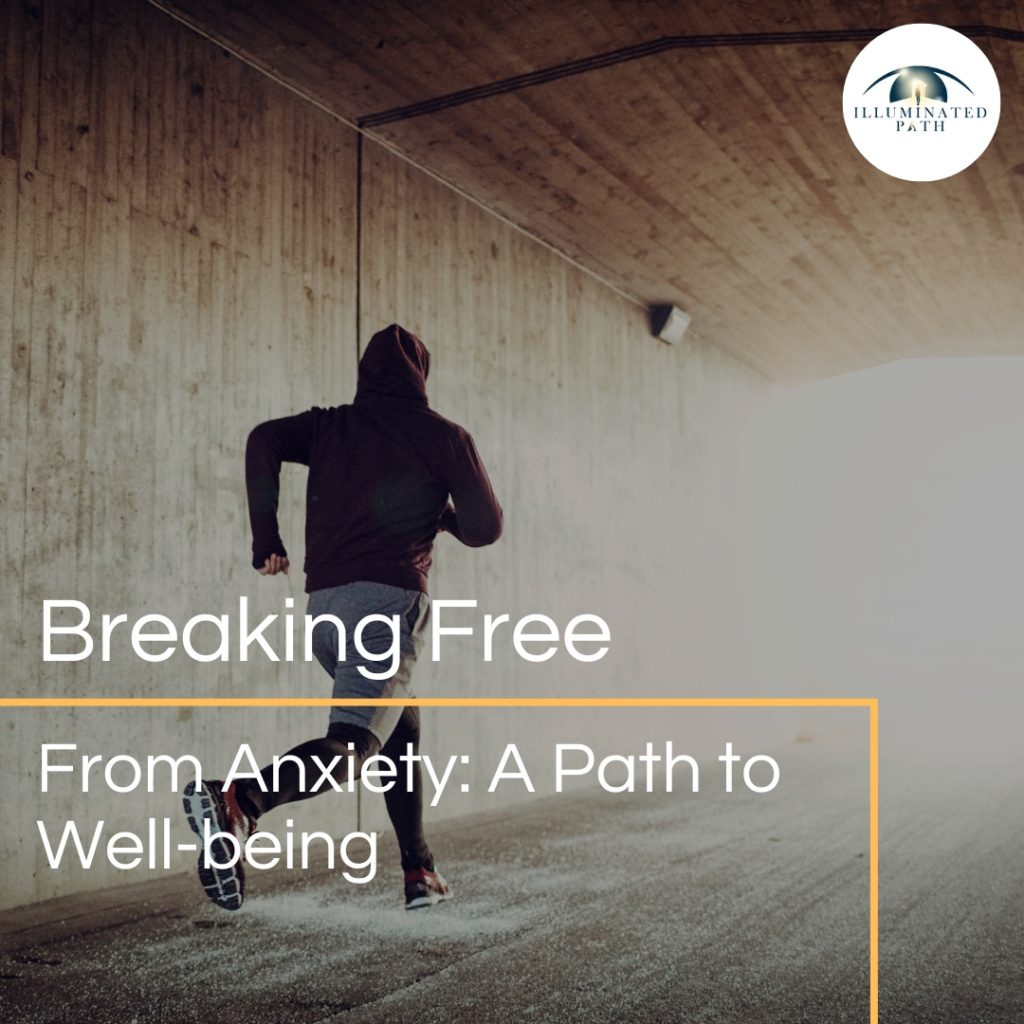
Anxiety. It’s a word that’s become increasingly commonplace in our everyday conversations, a feeling that many of us know all too well. But what exactly is anxiety, and how can we distinguish between the normal anxieties of life and a disorder that requires attention? At its core, anxiety is a natural human response to stress or perceived threat. It’s that feeling of unease, worry, or fear that we experience when faced with a challenging situation. In moderate amounts, anxiety can be beneficial, motivating us to take action and prepare for challenges. However, when anxiety becomes excessive, persistent, and interferes with our daily lives, it can signal an anxiety disorder. The Prevalence of Anxiety Disorders: A Global Concern Anxiety disorders are among the most common mental health conditions worldwide. According to the World Health Organization (WHO), an estimated 301 million people globally were living with an anxiety disorder in 2019, with women being disproportionately affected. (Source: WHO, Mental Health in a world of inequality: Report. 2021.) This number has likely risen since the COVID-19 pandemic, which introduced new stressors and uncertainties into people’s lives. In the United States, data from the National Institute of Mental Health (NIMH) reveals that an estimated 19.1% of U.S. adults experienced an anxiety disorder in any given year. (Source: NIMH, Anxiety Disorders. 2023). This highlights the significant impact of anxiety on individuals, families, and communities. These disorders manifest in various forms, including Generalized Anxiety Disorder (GAD), characterized by excessive worry about everyday events; Panic Disorder, involving recurrent panic attacks; Social Anxiety Disorder (SAD), marked by intense fear of social situations; Specific Phobias, involving fear of specific objects or situations; and Separation Anxiety Disorder, characterized by anxiety about separation from loved ones. Understanding the Roots of Anxiety Anxiety disorders are complex, and their development is influenced by a combination of factors. Genetics can play a role, with research suggesting that anxiety disorders can run in families. Brain chemistry imbalances, particularly in neurotransmitters like serotonin and norepinephrine, can also contribute. Life experiences, such as traumatic events or stressful circumstances, can trigger or worsen anxiety. Additionally, learned behaviors and personality traits, like neuroticism and perfectionism, can increase vulnerability. Recognizing the Symptoms Anxiety manifests in diverse ways, affecting individuals physically, emotionally, and behaviorally. Physical symptoms may include a rapid heartbeat, sweating, trembling, shortness of breath, muscle tension, headaches, fatigue, and sleep disturbances. Emotionally, anxiety can manifest as excessive worry, restlessness, irritability, feeling overwhelmed, fear of losing control, and difficulty concentrating. Behaviorally, it can lead to avoidance of situations, procrastination, social withdrawal, restlessness, and difficulty with daily tasks. The Impact of Anxiety on Daily Life Anxiety disorders can significantly impact an individual’s quality of life. They can strain relationships, leading to conflict and isolation. Anxiety can also impair concentration and productivity, affecting work or school performance. Chronic anxiety can contribute to physical health problems, including cardiovascular disease and digestive issues. Socially, anxiety can lead to withdrawal and difficulty engaging in activities. Seeking Help and Managing Anxiety The good news is that anxiety disorders are treatable. Effective options include psychotherapy, such as Cognitive Behavioral Therapy (CBT), which helps individuals identify and change negative thought patterns and behaviors. Medication, including antidepressants and anti-anxiety drugs, can also be helpful. Lifestyle changes, like regular exercise, a healthy diet, and sufficient sleep, can contribute to anxiety reduction. Mindfulness and relaxation techniques, such as meditation, deep breathing, and yoga, can promote calmness and reduce anxiety. The Importance of Anxiety Awareness Raising awareness about anxiety disorders is crucial for several reasons. It helps reduce stigma, encouraging people to seek help without shame. Early intervention is key to preventing anxiety from becoming chronic, and awareness promotes mental health literacy, empowering individuals to recognize symptoms. Creating supportive environments in families, schools, and workplaces can help individuals with anxiety feel safe and understood. Anxiety is a common human experience, but it doesn’t have to control your life. With awareness, understanding, and appropriate support, you can learn to manage anxiety and live a fulfilling life. The Author Dr. Shadi Souferian Psy. D. Licensed Clinical Psychologist Therapist And Psychologist in Los Angeles And Beverly Hills. You might also enjoy this article: Breaking Free from Anxiety: A Path to Well-being February 10, 2025Personal DevelopmentTrauma Parenting is often described as one of the most rewarding and challenging roles in life.…Read more Energy Psychology: Bridging Ancient Wisdom and Modern Science for Holistic Healing February 5, 2025Personal Development The Rising Demand for Alternative Mental Health Solutions Mental health disorders affect over 970 million…Read more Finding the Way Back to Connection: How Therapy Fosters Deeper Relationships With Self and Others January 29, 2025Life TransformationRelationship “In therapy, we are trying to help people feel more connected to themselves and others.”…Read more Healing Hearts, Building Bridges: Nurturing Relationships After Trauma January 23, 2025Trauma Trauma, whether a singular event or a series of ongoing experiences, can leave deep scars…Read more The Power of Cogmed : Unlocking Better Cognitive and Noncognitive Outcomes for Children January 10, 2025Parenting Working memory (WM) is a cornerstone of cognitive functioning, allowing individuals to temporarily hold and…Read more Bridging the Gap: Navigating Parenting Style Differences in Blended Families January 6, 2025Parenting Blended families are on the rise, with an estimated 16% of U.S. children living in…Read more
Healing Hearts, Building Bridges: Nurturing Relationships After Trauma
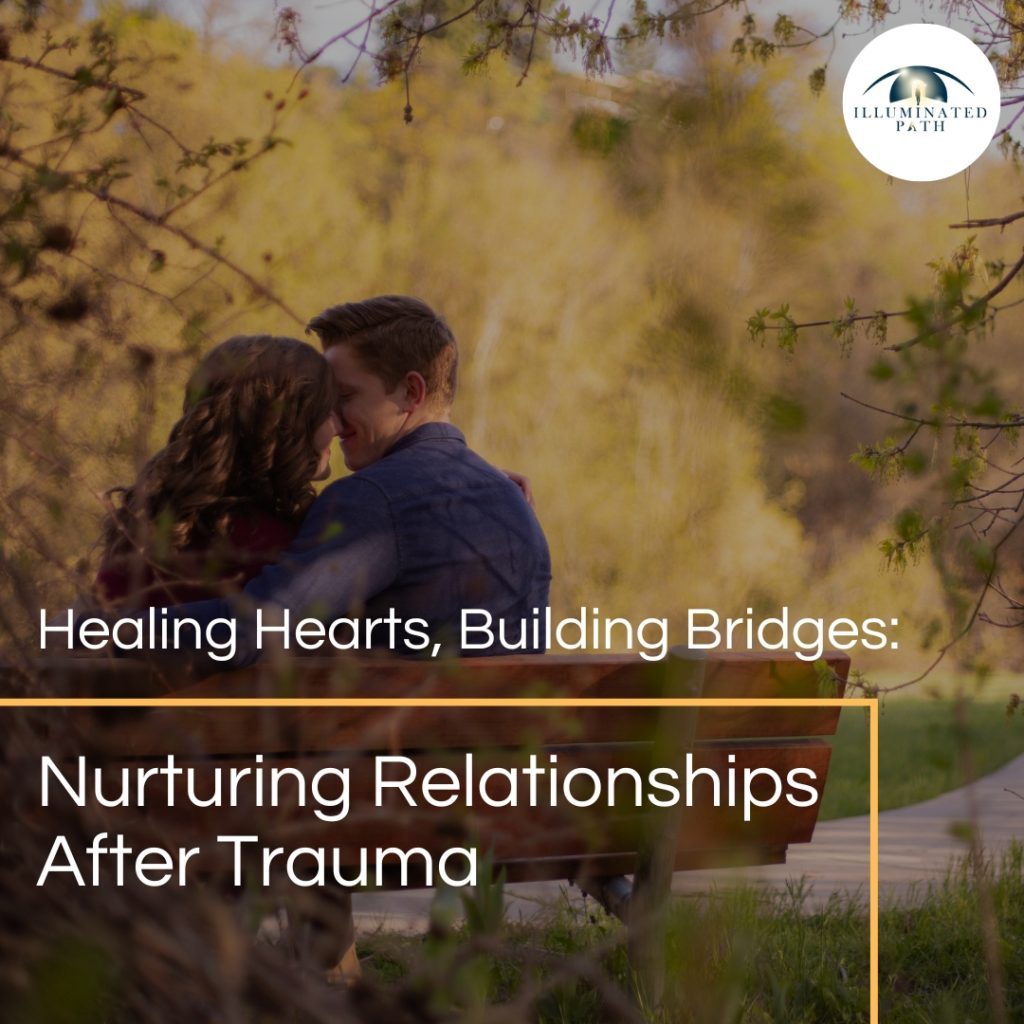
Trauma, whether a singular event or a series of ongoing experiences, can leave deep scars on an individual’s life. These wounds extend beyond the emotional and mental realm, often impacting the ability to form and maintain healthy relationships. The invisible burden of trauma can create obstacles to intimacy, trust, and open communication, making it challenging to connect with others on a profound level. But with understanding, support, and the right tools, it’s entirely possible to heal from trauma and cultivate fulfilling relationships. Understanding How Trauma Affects Relationships Trauma manifests in diverse ways, and its effects on relationships are equally varied. Some common hurdles faced by individuals and couples dealing with trauma include: Struggling with Trust and Intimacy: Trauma can chip away at trust in oneself and others, making it difficult to feel safe and vulnerable in close relationships. Survivors may find emotional intimacy challenging, fearing that opening up will lead to more pain or rejection. Communication Barriers: Trauma can disrupt communication patterns, hindering the ability to express needs and boundaries effectively. Survivors may grapple with emotional regulation, leading to outbursts, withdrawal, or difficulty understanding their partner’s emotions. Conflict and Triggered Reactions: Past trauma can be triggered by seemingly harmless events in the present, leading to heightened emotional responses and conflict. Survivors may react in ways that seem out of proportion to the situation, leaving their partners feeling confused and hurt. Repeating Trauma Patterns: Unresolved trauma can lead to unconscious behaviors that recreate past traumatic experiences in current relationships. This might manifest as seeking out partners who resemble abusers or engaging in self-sabotaging behaviors. Isolation and Withdrawal: Trauma can foster feelings of isolation and disconnection, making it difficult to seek support or engage in social activities. Survivors may withdraw from relationships to avoid triggering situations or feeling overwhelmed. The Prevalence of Trauma’s Impact on Relationships The impact of trauma on relationships is a significant concern, and research underscores the prevalence of these challenges: Adverse Childhood Experiences (ACEs): The groundbreaking ACEs study revealed a strong link between childhood trauma and a range of negative outcomes in adulthood, including relationship difficulties, divorce, and intimate partner violence. (Source: Felitti et al., 1998) Intimate Partner Violence (IPV): Trauma is a major risk factor for both perpetrating and experiencing IPV. Survivors of childhood abuse are more likely to experience IPV in adulthood, and IPV itself can be a deeply traumatizing experience. (Source: Centers for Disease Control and Prevention) Mental Health Disorders: Trauma significantly contributes to mental health disorders like PTSD, depression, and anxiety, which can severely impact relationships. Individuals with PTSD are more likely to experience relationship difficulties, including higher rates of divorce and separation. (Source: National Center for PTSD) Rebuilding and Strengthening Relationships After Trauma Healing from trauma and building healthy relationships is a journey that requires patience, self-compassion, and often professional guidance. Here are some key strategies that can help: 1. Seeking Professional Support: Therapy: Trauma-informed therapy offers a safe and supportive environment to process traumatic experiences, develop coping mechanisms, and address relationship challenges. Various therapeutic approaches, such as Cognitive Behavioral Therapy (CBT), Eye Movement Desensitization and Reprocessing (EMDR), and Somatic Experiencing, can be effective in treating trauma. Couples Therapy: If both partners are willing, couples therapy can help address communication issues, rebuild trust, and develop healthier patterns of interaction. Trauma-informed couples therapy can help partners understand the impact of trauma on their relationship and work together to create a more supportive and secure environment. 2. Cultivating Self-Awareness and Self-Compassion: Identifying Triggers: Understanding your triggers and how they affect your behavior can help you manage emotional reactions and communicate more effectively with your partner. Prioritizing Self-Care: Engaging in activities that promote emotional and physical well-being, such as mindfulness, exercise, and spending time in nature, can help regulate emotions and build resilience. Challenging Negative Thoughts: Trauma can lead to negative beliefs about oneself and the world. Challenging these thoughts and replacing them with more positive and realistic ones can improve self-esteem and relationship satisfaction. 3. Fostering Communication and Trust: Open and Honest Dialogue: Creating a safe space for open and honest communication is crucial for building trust and intimacy. This involves actively listening to your partner, expressing your needs and boundaries clearly, and being willing to be vulnerable. Non-Violent Communication: Learning non-violent communication techniques can help you express yourself in a way that is respectful and empathetic, even during disagreements. Repairing Relationship Ruptures: Conflict is inevitable in any relationship, but it’s how you repair those ruptures that matters. Apologizing for hurtful behavior, taking responsibility for your actions, and working together to find solutions can strengthen the bond between partners. 4. Establishing Healthy Boundaries: Identifying and Communicating Boundaries: Clearly defining your boundaries and communicating them assertively is crucial for protecting your emotional and physical well-being. Respecting Your Partner’s Boundaries: It’s equally important to respect your partner’s boundaries and be willing to compromise when necessary. Enforcing Boundaries: If your boundaries are violated, it’s important to address the issue directly and take steps to protect yourself. 5. Practicing Patience and Forgiveness: Patience with Yourself: Healing from trauma takes time, and it’s important to be patient with yourself and your partner throughout the process. Forgiveness: Forgiving yourself and others for past hurts can be a powerful step towards healing and moving forward. Focusing on the Present: While it’s important to acknowledge the past, it’s equally important to focus on the present and build a future together. 6. Building a Support Network: Connecting with Others: Spending time with supportive friends and family can provide a sense of connection and belonging. Joining a Support Group: Connecting with others who have experienced trauma can provide a sense of validation and understanding. Engaging in Community Activities: Participating in activities that align with your interests can help you build new relationships and expand your support network. By integrating these strategies, individuals and couples can navigate the complexities of trauma and forge a path toward healing and healthy connection. Remember: Trauma is not your fault. You are not responsible for what happened
Trauma Validation: A Crucial Step in the Healing Journey
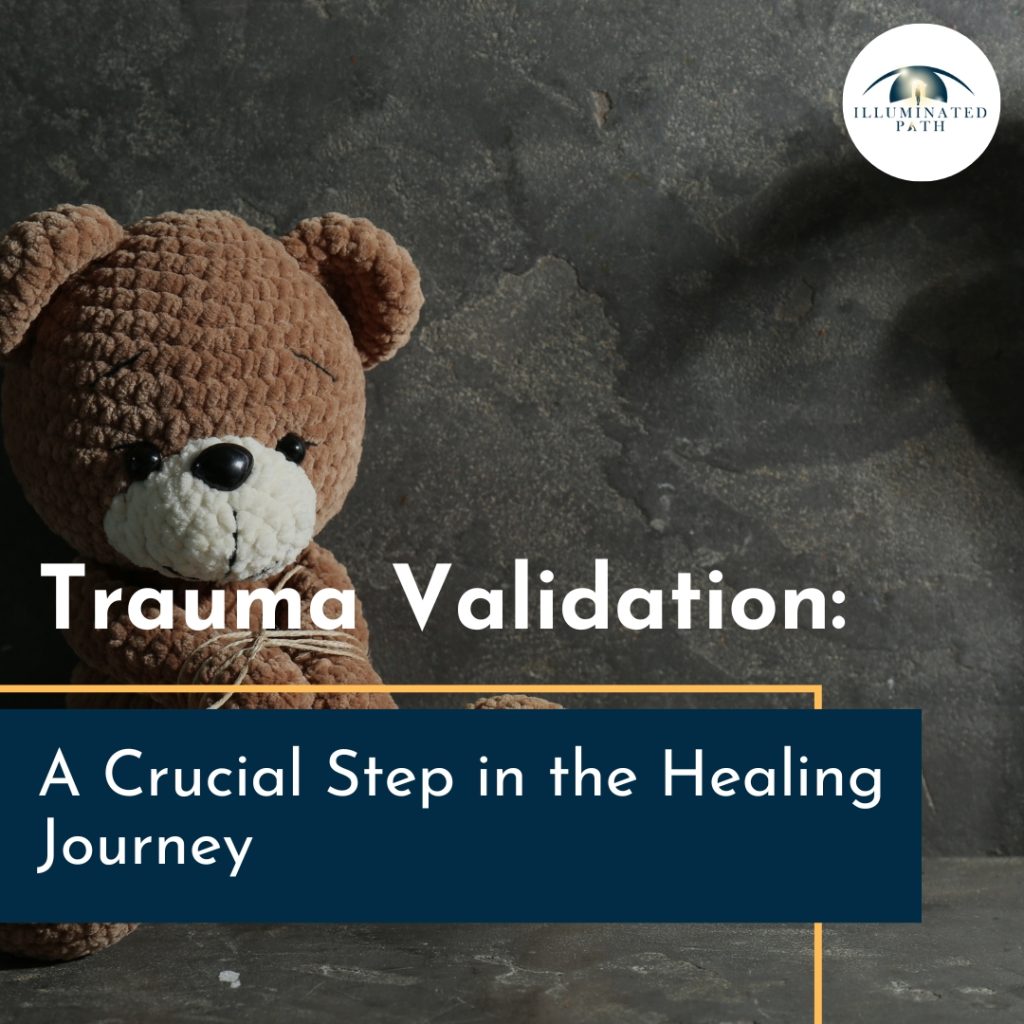
“Trauma is personal. It does not disappear if it is not validated. When it is ignored or invalidated the silent screams continue internally heard only by the one held captive. When someone enters the pain and hears the screams healing can begin.” This powerful quote encapsulates the profound impact of trauma and the critical role of validation in the healing process. Trauma, whether stemming from a single event or a series of experiences, leaves an indelible mark on an individual’s psyche, often manifesting in emotional, psychological, and even physical distress. When these experiences are ignored, dismissed, or minimized, the wounds fester, leaving individuals trapped in a cycle of pain and suffering. The Prevalence of Trauma: Trauma is far more common than many realize. According to the Substance Abuse and Mental Health Services Administration (SAMHSA), 70% of adults in the United States have experienced some type of traumatic event at least once in their lives. This translates to approximately 223.4 million people. These experiences can range from physical or sexual abuse and natural disasters to witnessing violence or experiencing the sudden loss of a loved one. The Impact of Unvalidated Trauma: When trauma is invalidated, the consequences can be devastating. Individuals may feel isolated, misunderstood, and even blamed for their own suffering. This can lead to a range of mental health challenges, including: Post-traumatic Stress Disorder (PTSD): Characterized by intrusive thoughts, flashbacks, nightmares, avoidance behaviors, and hyperarousal. The National Center for PTSD estimates that 8% of Americans will experience PTSD at some point in their lives. Complex PTSD (C-PTSD): Often develops in response to prolonged or repeated trauma, such as childhood abuse or neglect. C-PTSD can involve difficulties with emotional regulation, self-perception, and relationships. Depression: Persistent feelings of sadness, hopelessness, and loss of interest in activities. The World Health Organization estimates that over 280 million people worldwide suffer from depression. Anxiety Disorders: Excessive worry, fear, and nervousness. The National Institute of Mental Health reports that anxiety disorders are the most common mental illness in the U.S., affecting 40 million adults each year. Substance Abuse: Individuals may turn to drugs or alcohol to cope with the emotional pain of unvalidated trauma. The National Survey on Drug Use and Health found that 19.7 million American adults battled a substance use disorder in 2017. The Power of Validation: Validation plays a crucial role in trauma recovery. It involves acknowledging the reality of the trauma, recognizing its impact, and communicating understanding and acceptance. When someone’s experiences are validated, they feel heard, seen, and believed. This can be immensely empowering, helping to break down feelings of shame, self-blame, and isolation. How Validation Facilitates Healing: Reduces Shame and Self-Blame: Validation helps individuals understand that their reactions to trauma are normal and understandable, reducing feelings of shame and self-blame. Restores Trust: When someone validates our experiences, it helps to rebuild trust in ourselves and others, which may have been shattered by the trauma. Facilitates Emotional Regulation: Validation helps individuals feel safe and understood, which can facilitate emotional processing and regulation. Empowers Agency: By acknowledging the impact of trauma, validation empowers individuals to take control of their healing journey. Creating a Culture of Validation: While therapists and mental health professionals play a vital role in validating trauma, creating a culture of validation extends beyond the therapy room. It involves fostering an environment where individuals feel safe to share their experiences without fear of judgment or dismissal. This can be achieved through: Active Listening: Pay attention to what others are saying, both verbally and nonverbally. Reflect back their feelings and experiences to demonstrate understanding. Empathy: Try to see the world from the other person’s perspective. Acknowledge their pain and validate their emotions. Non-Judgmental Stance: Avoid making assumptions or offering unsolicited advice. Create a safe space for individuals to share their experiences without fear of criticism. Education: Increase awareness and understanding of trauma and its impact. Challenge misconceptions and stereotypes surrounding trauma. The Healing Journey: Healing from trauma is a complex and deeply personal journey. There is no one-size-fits-all approach, and the path to recovery may be long and winding. However, validation serves as a crucial foundation, providing a sense of safety and support that allows individuals to begin processing their experiences and moving towards healing. By creating a culture of validation, we can help break the silence surrounding trauma and empower individuals to reclaim their lives. When we enter the pain and hear the screams, we open the door to healing and transformation. The Author Dr. Shadi Souferian Psy. D. Licensed Clinical Psychologist Therapist And Psychologist in Los Angeles And Beverly Hills. You might also enjoy this article: Trauma Validation: A Crucial Step in the Healing Journey November 25, 2024By:Dr. Shadi Souferian, Psy.DTrauma0Comments “Owning our story can be hard but not nearly as difficult as spending our lives…Read more Facing Our Truths: The Power of Vulnerability and Authenticity November 21, 2024By:Dr. Shadi Souferian, Psy.DPersonal Development0Comments “Owning our story can be hard but not nearly as difficult as spending our lives…Read more The Symphony of Stress: Understanding and Navigating the Body’s Alarm System November 18, 2024By:Dr. Shadi Souferian, Psy.DUncategorized0Comments Stress. The word itself can evoke a visceral reaction, conjuring images of deadlines, overflowing inboxes,…Read more The Key to a Happy Relationship: It’s All About Repair, Not the Absence of Conflict November 15, 2024By:Dr. Shadi Souferian, Psy.DRelationshipCouple RelationshipHealthy Relationships0Comments In the world of relationships, conflict is inevitable. Even the happiest couples argue, but what…Read more Finding Peace in the Present: Letting Go of “Should” and Managing Stress October 28, 2024By:Dr. Shadi Souferian, Psy.DPersonal DevelopmentStress Management0Comments our struggle to accept reality as it is often lies at the root of our…Read more Embracing Imperfection: A Path to Empathy and Acceptance October 17, 2024By:Dr. Shadi Souferian, Psy.DRelationshipCouple RelationshipMarriage0Comments Imperfection is a universal human experience. Yet, many of us strive for unattainable standards of…Read more
Hidden Scars: Unmasking the Impact of Childhood Trauma
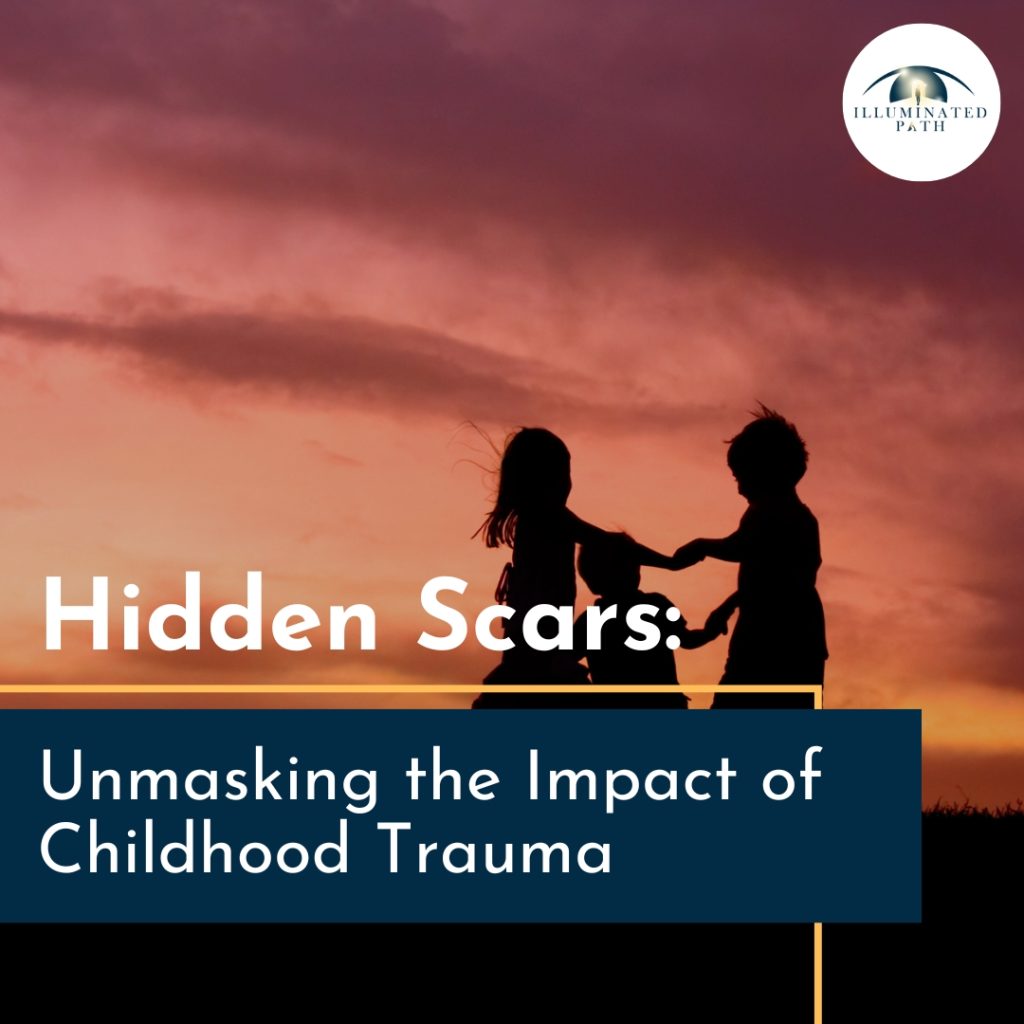
The weight of childhood trauma settles on the soul like an invisible cloak, its presence felt but its form unseen. It casts long shadows, distorting perceptions and leaving a trail of emotional scars that linger long after the wounds have healed. Prevalence and Impact Prevalence: According to the National Council for Behavioral Health, approximately 1 in 4 adults in the United States experienced at least one type of childhood trauma. ([Source: National Council for Behavioral Health]) Impact: Childhood trauma has been linked to a wide range of mental health issues, including depression, anxiety, substance abuse, and post-traumatic stress disorder (PTSD). Studies have also shown that individuals who experience childhood trauma are more likely to have difficulty forming healthy relationships and may be at a higher risk for physical health problems. Additionally, childhood trauma can have a significant impact on an individual’s career, education, and overall quality of life. The Hidden Scars One of the most insidious aspects of childhood trauma is its ability to mask itself, to hide beneath layers of resilience and denial. Children, with their innate capacity for adaptability, often find ways to cope, to bury the pain deep within, where it festers unnoticed. But the scars remain, etched into the very fabric of their being, waiting to be unmasked. The long-term effects of childhood trauma can manifest in various ways, including: Emotional and psychological difficulties: Flashbacks, intrusive thoughts, hypervigilance, and constant feelings of being on edge. Relationship challenges: Difficulty forming and maintaining healthy relationships due to issues with trust, intimacy, and communication. Mental health disorders: Increased risk of depression, anxiety, substance abuse, and PTSD. Physical health problems: Higher rates of chronic illnesses, such as heart disease, diabetes, and autoimmune disorders. Career and educational setbacks: Challenges in achieving academic and professional success due to the impact of trauma. The Path to Healing The path to healing from childhood trauma is not a straight line. It is often a winding and bumpy road, filled with setbacks and challenges. But with perseverance, hope, and the right support, it is possible to reach a place of peace and wholeness. Acknowledge the trauma: This is the first step in the healing process. It allows individuals to make sense of their experiences and begin to reclaim their power. Seek professional help: A trauma specialist therapist can provide a safe and supportive space for individuals to process their emotions, explore their coping mechanisms, and develop healthy coping strategies. Engage in self-care: Activities like exercise, meditation, and spending time in nature can support the healing process. Build a support network: Connecting with others who have experienced childhood trauma can provide a sense of belonging and understanding. Be patient and compassionate: Healing is a journey, and it takes time and effort. Childhood trauma leaves a lasting impact on the human psyche, but it does not have to define one’s future. By acknowledging the pain, seeking support, and engaging in self-care, individuals can begin to heal and reclaim their lives. The journey may be challenging, but the rewards are immeasurable. The Author Dr. Shadi Souferian Psy. D. Licensed Clinical Psychologist Therapist And Psychologist in Los Angeles And Beverly Hills. You might also enjoy this article: Hidden Scars: Unmasking the Impact of Childhood Trauma October 2, 2024By:Dr. Shadi Souferian, Psy.DTraumaChildhoodTrauma0Comments The weight of childhood trauma settles on the soul like an invisible cloak, its presence…Read more Finding Meaning in Life’s Transformations: Embracing Change with the Help of Psychology September 25, 2024By:Dr. Shadi Souferian, Psy.DLife TransformationLifetransition0Comments Life is a symphony composed with notes of joy, sorrow, triumph, and challenge. It’s a…Read more Anxiety and Relationships: Communication and Understanding – The Statistical Picture September 19, 2024By:Dr. Shadi Souferian, Psy.DRelationship0Comments Anxiety disorders, with their pervasive reach, impact a significant portion of the population, casting a…Read more How Couples Therapy Can Strengthen Your Bond: A Path to Lasting Love September 18, 2024By:Dr. Shadi Souferian, Psy.DRelationship0Comments Maintaining a fulfilling and harmonious relationship requires ongoing effort and dedication. Even the most devoted…Read more How to Stop the Cycle of Fighting in a Relationship July 31, 2023By:Dr. Shadi Souferian, Psy.DRelationshipConflict ResolutionCoupleHealthy Relationships0Comments Fighting is a natural part of any relationship, but when it becomes a recurring pattern,…Read more Unlocking Inner Harmony: Discover the Power of Internal Family Systems (IFS) Therapy June 15, 2023By:Dr. Shadi Souferian, Psy.DUncategorized0Comments Discover the Power of Internal Family Systems (IFS) Therapy In the depths of our beings…Read more
